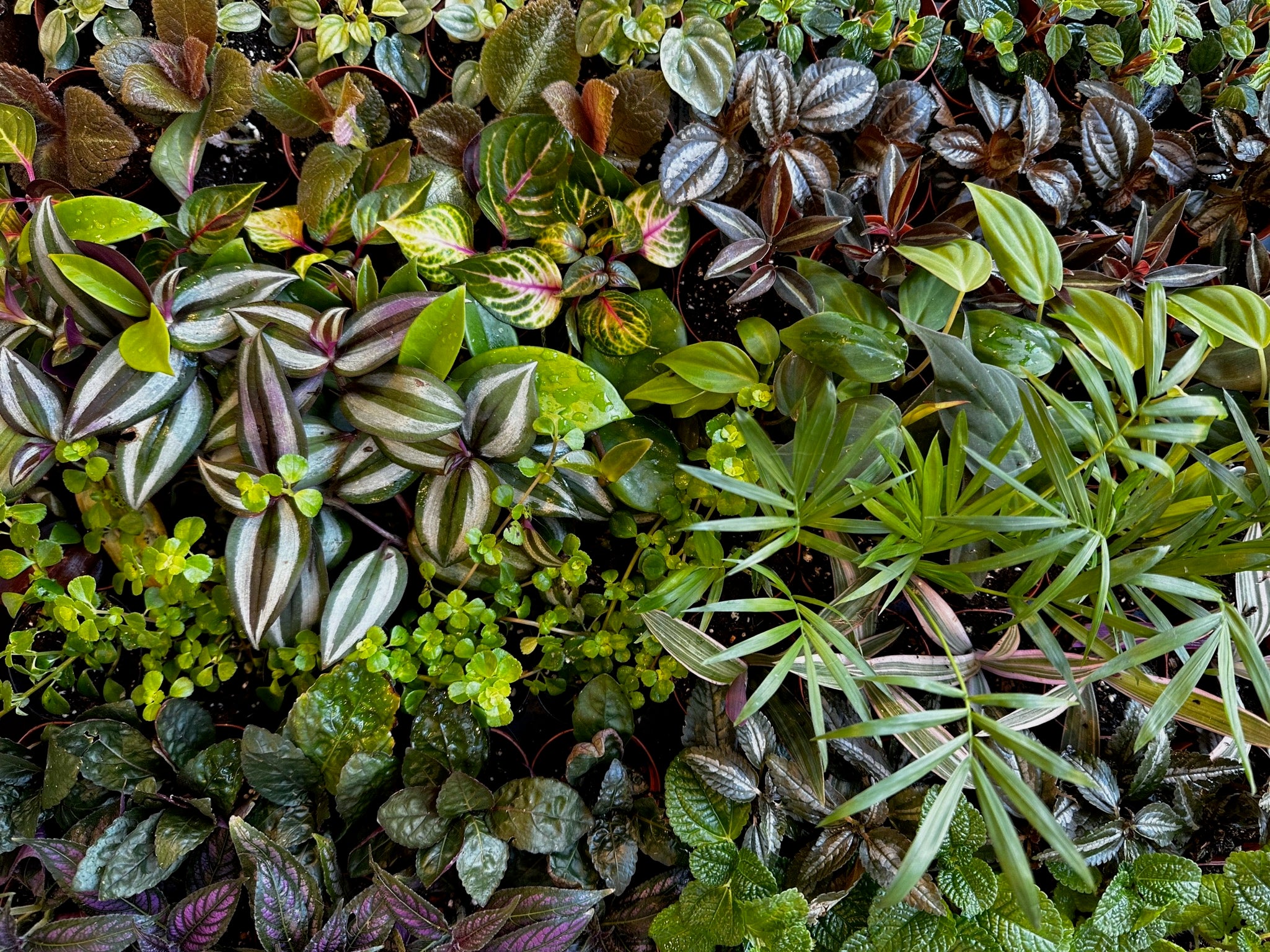
Ah, the joy of collecting houseplants! You've mastered the art of watering, light, and TLC, but there's one thing that sometimes leaves us tongue-tied: those tricky-to-pronounce plant names. Fear not, for we're here to unravel the mysteries of botanical pronunciation. Let's dive into the world of plant linguistics and decode the names of some common tongue-twisters.
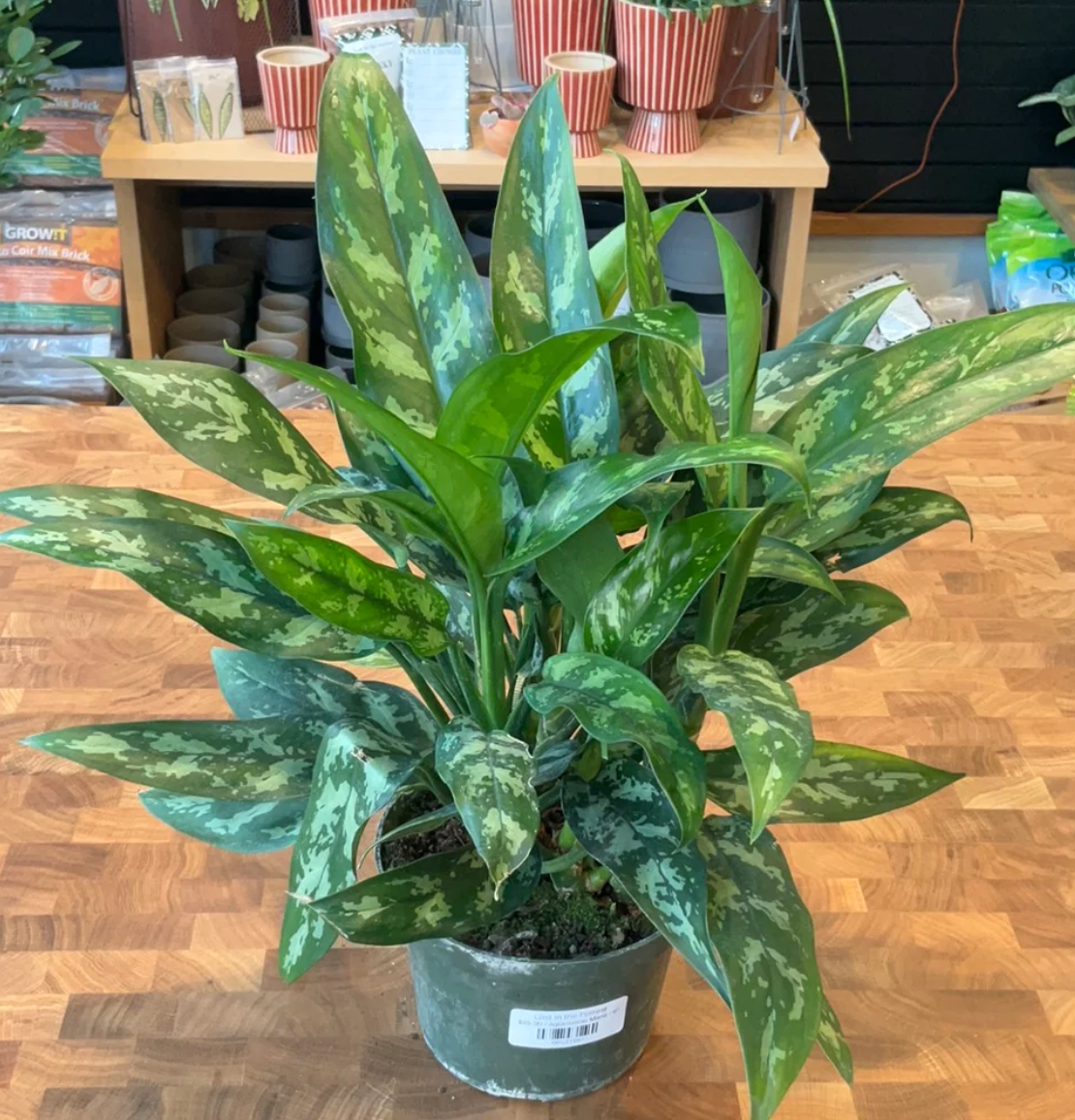
Aglaonema
(Ag-lay-o-NEE-ma)
Aglaonema is a genus comprising over 20 species and numerous cultivars. This diversity means you can find varieties with various leaf colors and patterns.
They thrive in the low to medium light conditions typically found in homes and offices. Its ability to adapt to different light levels makes it a popular choice for indoor spaces.
In some cultures, Aglaonema is considered a symbol of good luck and prosperity, making it a popular choice for gifts and decorative plants.
Anthurium (An-THUR-ee-um)
-

Anthurium Dorayaki
Shop Anthurium Dorayaki(Dor-ah-YAH-kee)
Anthurium Dorayaki gets its name from the famous Japanese sweet treat "Dorayaki," which consists of two fluffy pancakes sandwiched together with sweet red bean paste. This plant's heart-shaped leaves resemble these delectable pancakes.
Like many Anthurium species, the Dorayaki is epiphytic in the wild, meaning it often grows on trees or other structures rather than in soil. In indoor settings, it thrives in well-draining potting mix.
-

Anthurium Vittariifolium
Shop Anthurium Vittariifolium(Vit-ar-ee-eye-FO-lee-um)
Anthurium Vittariifolium is known for its stunning foliage. The plant's elongated, leathery leaves are deeply veined and resemble the fronds of certain ferns, giving it a unique and captivating appearance.
While the primary attraction is its foliage, Vittariifolium can produce distinctive, spadix-shaped flowers in shades of white or green. These blooms have a charming, minimalist beauty.
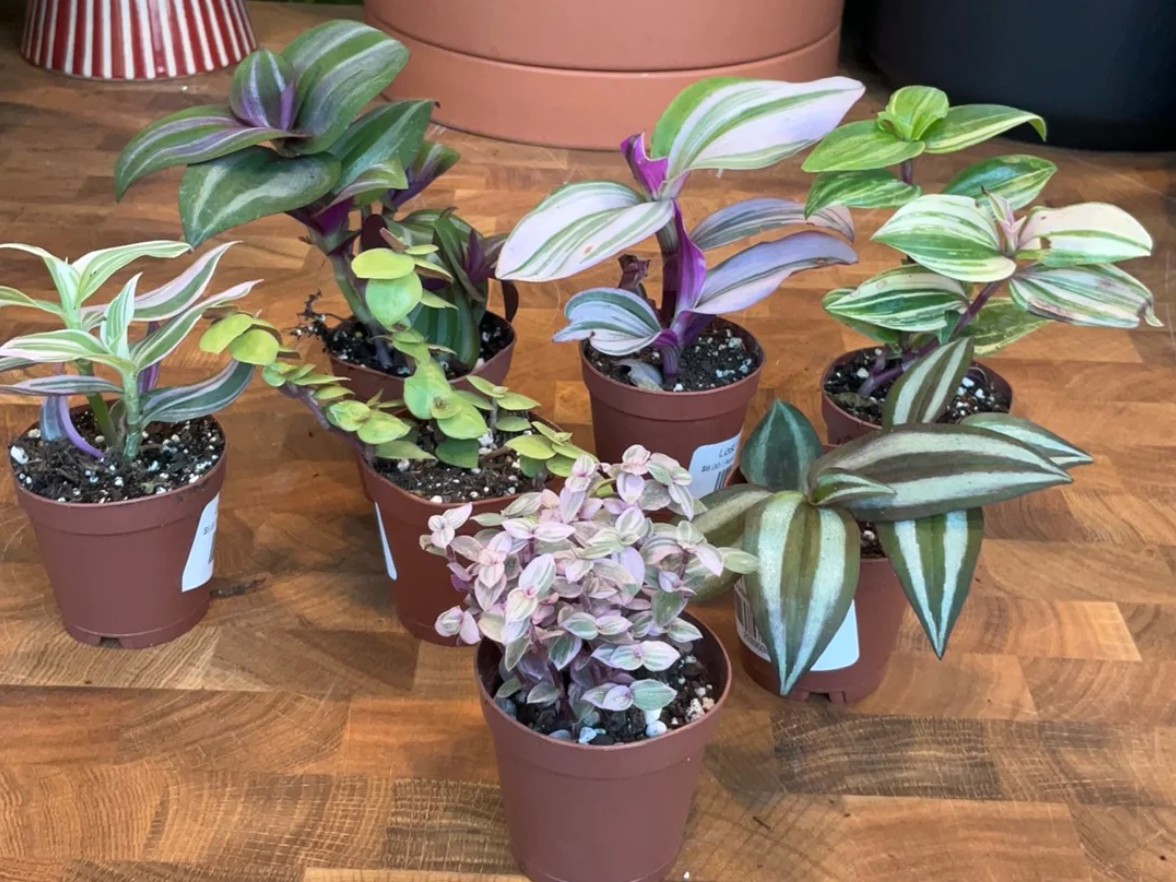
Tradescantia
(Tray-des-KANT-ee-uh)
The Tradescantia genus encompasses a wide range of species, each with its unique foliage and growth habits. Some common species include T. zebrina, T. fluminensis, and T. pallida.
This plant is also known for its ease of care, making it suitable for both beginner and experienced plant enthusiasts. It thrives in bright to moderate indirect light and prefers consistently moist soil. If cared for properly they can be quite fast growers!
Hoya (HOY-uh)
-

Hoya Crassipetiolata
Shop Hoya Crassipetiolata(Crass-ee-pet-ee-oh-LAH-tuh)
The Hoya Crassipetiolata's most distinctive feature is its thick, succulent-like leaves. These leaves are typically oval or heart-shaped and have a glossy appearance. It is often referred to as the "Thick-Leaved Hoya" due to the thickness and durability of its leaves.
While it is primarily grown for its foliage, Hoya Crassipetiolata can produce clusters of small, waxy, and star-shaped flowers. The flowers may be white or have a pale pink hue and are known for their sweet fragrance.
-

Hoya Nummularioides
Shop Hoya Nummularioides(Num-mew-lar-ee-OY-deez)
The name "Nummularioides" comes from the Latin word "nummularius," meaning "coin-shaped." It's a reference to the small, round leaves of this Hoya.
Hoyas, including Nummularioides, are generally considered non-toxic to pets, making them a safe choice for households with cats or dogs
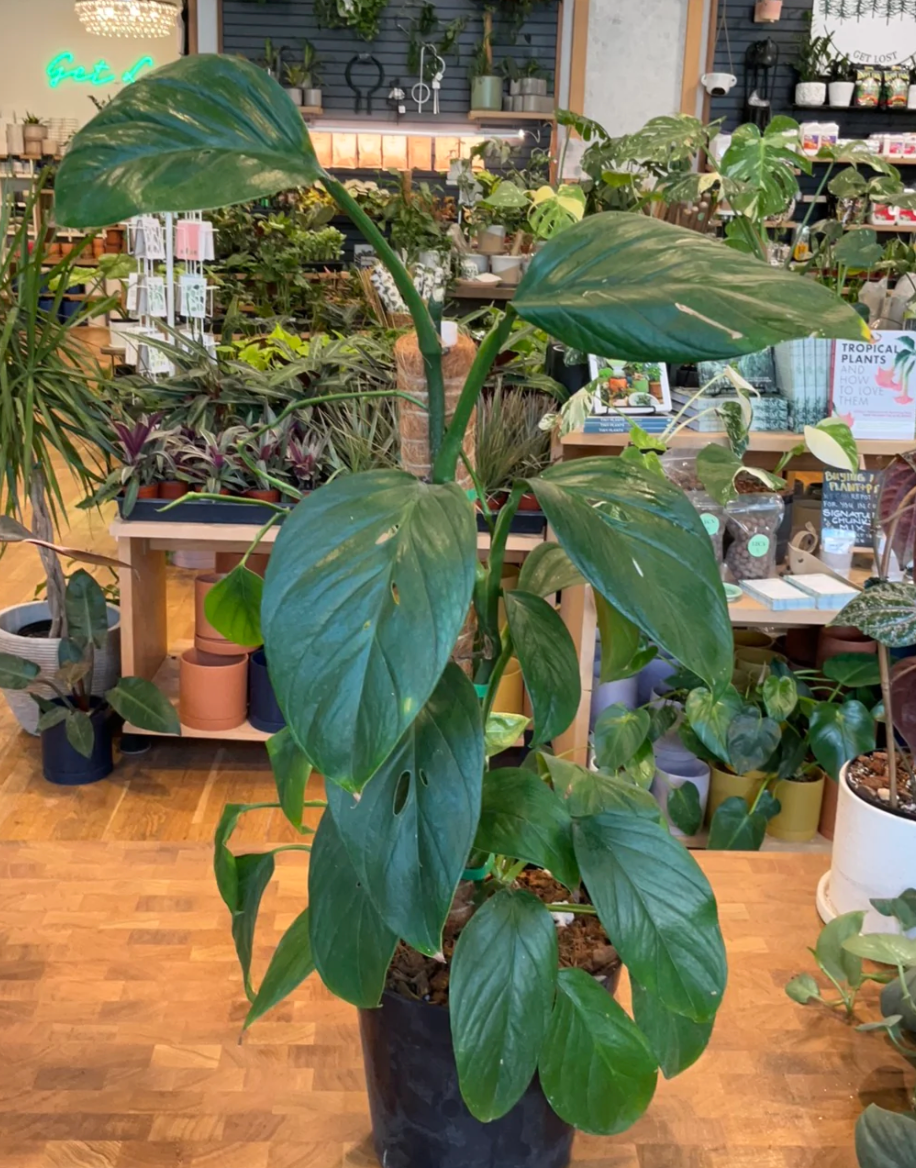
Monstera Lechleriana
(Mon-STAY-rah Lek-luh-REE-ah-nuh)
What sets Lechleriana apart is its foliage. Unlike the iconic Swiss Cheese Plant (Monstera deliciosa), this species has leaves that are deeply lobed and almost resemble the appearance of a kite.
Despite its unique appearance, Lechleriana is relatively low-maintenance. It prefers bright, indirect light and should be allowed to dry out slightly between waterings.
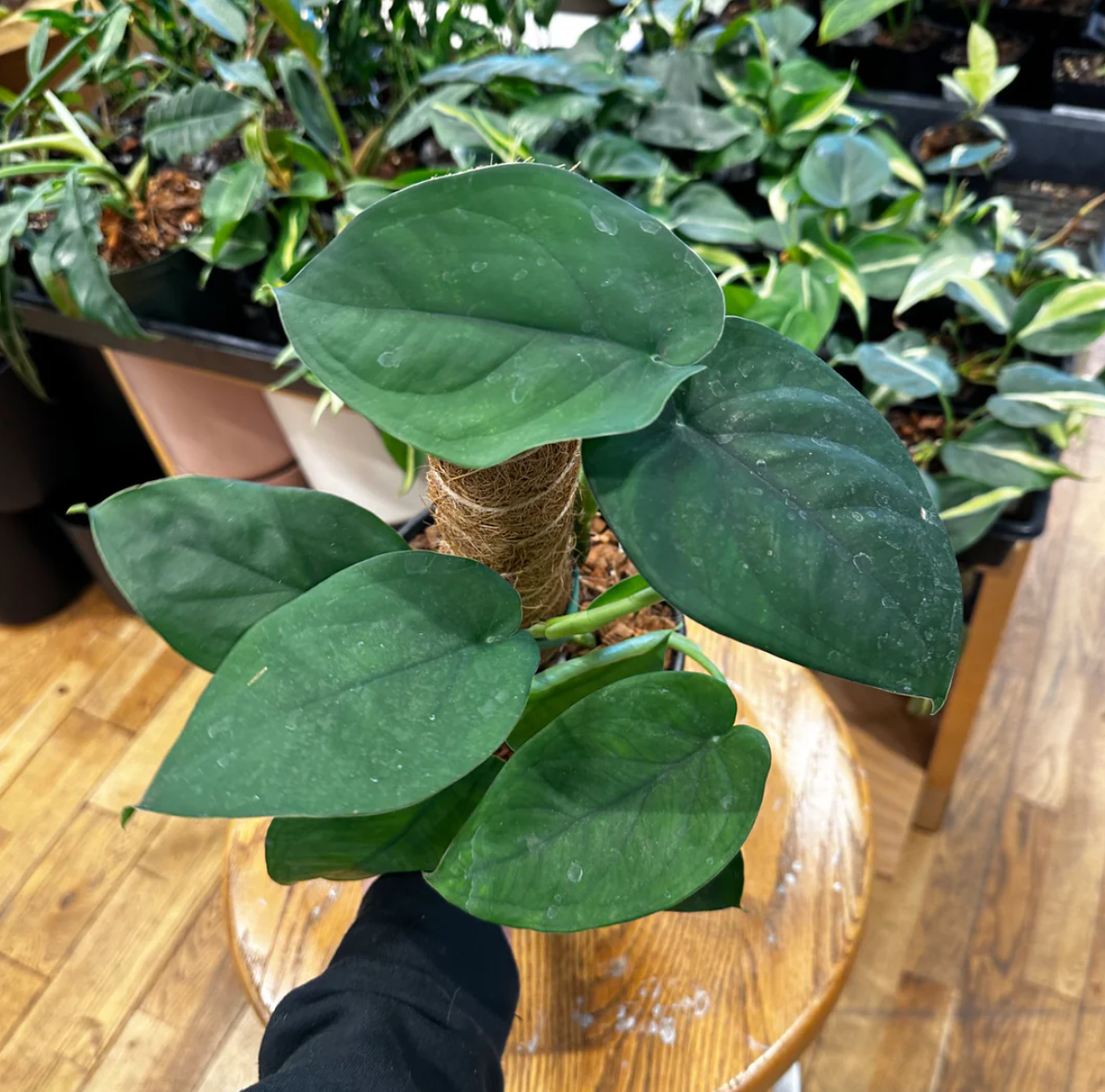
Syngonium Chiapense
(Sin-GOH-nee-um Chee-ah-PEN-say)
Syngonium Chiapense is native to the tropical rainforests of Mexico, particularly in the Chiapas region. In its natural habitat, it thrives in warm and humid conditions.
Like other Syngonium species, Chiapense exhibits a vining growth habit. It can be trained to climb or allowed to cascade, making it suitable for hanging baskets or plant stands.
And there you have it! Another volume of pronunciation of popular houseplants. Remember, plant names are like secret codes that unlock the wonders of the natural world. So, go ahead, impress your fellow plant lovers with your newfound pronunciation prowess. And while you're at it, give your green buddies a little extra love—they'll appreciate it, no matter how you say their names!
XOXO,
LITF


